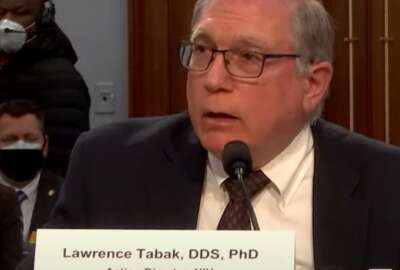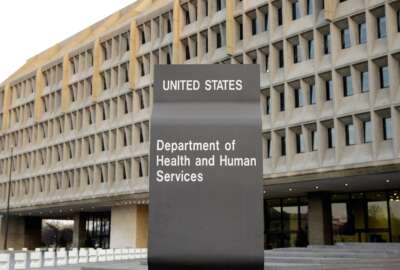
What good is a clinical trial if nobody knows what the results were?
NIH funds or conducts dozens of medical trials every year. Trials come with statutory requirements to report the results.
Best listening experience is on Chrome, Firefox or Safari. Subscribe to Federal Drive’s daily audio interviews on Apple Podcasts or PodcastOne.
The National Institutes of Health could be called clinical trials are us. It funds or conducts dozens of medical trials every year. Trials come with statutory requirements to report the results. Now the Health and Human Services Office of Inspector General has found some shortcomings in NIH reporting on clinical trials. For more, the Federal Drive with Tom Temin turns to the HHS assistant regional inspector general Sylvie Witten.
Interview transcript:
Tom Temin: And just give us a sense of the scope. How many clinical trials are going on at a given time at NIH. Is it dozens, 100s, 1000s?
Sylvie Witten: More than dozens, probably 100s and 1000s. I mean, I don’t have the data sitting in front of me, but there are a lot of clinical trials going on.
Tom Temin: Okay. And they do have a statutory reporting requirement. What exactly are they supposed to do under law?
Sylvie Witten: So there’s actually two parts to the reporting requirements. And I’ll briefly discuss both. There’s a submission requirement which the responsible party is responsible for submitting the results of the clinical trial. And then there’s also the posting of those results, which the National Institute of Health is responsible for. So federal law requires the responsible party of an applicable clinical trial to actually submit the results of its clinical trials to clinicaltrials.gov. within one year of the earlier of the estimated or actual completion date. And the National Institutes of Health also has policy that has that same one year reporting timeframe. The responsible party is designated by the actual sponsor of that clinical trial. And the responsible party has control over the data, and has the right to publish the trial results.
Tom Temin: Right. So the designating is done by one of the institutes that’s probably funding it, and then they would designate the recipient of a grant to do this study as the responsible party. Is that in general, how it works?
Sylvie Witten: In general, that’s how it works. Yes. So then both federal law and NIH policy require that NIH ensure that the responsible party of any NIH-funded clinical trials comply with that submission requirement. And then once the responsible party has submitted the results, that’s when NIH has the posting requirement. And NIH National Library of Medicine staff are responsible for reviewing the clinical trial results that are submitted, looking for just any apparent errors or deficiencies or any inconsistencies. And then once that’s all worked through, and the review is completed, the National Library of Medicine staff posts the results to clinicaltrials.gov., for the public to view.
Tom Temin: Right, the point of all of this exercise then is so ultimately, anyone can see the results of the trial after it’s been vetted. And the report has been vetted by the correct NIH entity?
Sylvie Witten: Correct. And then NIH has the responsibility to post those results within 30 days of the submission of the results. So they’ve got 30 days to actually once they get that clinical trial results information, to go through the review process and actually post the results on clinicaltrials.gov.
Tom Temin: So it sounds like this is the tail end of what should be some pretty good oversight of the clinical trials that they fund in the first place. Sure. And if they don’t do that, what are the repercussions then nobody knows whatever happened or the public can’t find out?
Sylvie Witten: Right? So having the results of clinical trials publicly available, regardless of whether it’s a positive or negative result really does improve the design of future research, the advancement and development of clinical interventions. And when the results are not submitted to clinicaltrials.gov in a timely manner, then that information about those results, including anything about adverse events or anything that occurred during the clinical trials isn’t available to health care providers, patients or researchers, you know, that public front isn’t there, which was what you were talking about earlier.
Tom Temin: Sure. We’re speaking with Sylvie Witten. She’s assistant regional inspector general at Health and Human Services. And so you took a look at how well they report and just give us a sense of the methodology. How did you go about determining what you did find out?
Sylvie Witten: So the methodology for this audit was fairly simple. We basically compare the dates that the results of the clinical trial should have been submitted to the date that they were actually submitted. And then we also determined whether NIH posted those clinical trial results to clinicaltrials.gov within 30 days of the submission date as required by law.
Tom Temin: And you looked across a pretty good cross-section of them, say from the different Institute components?
Sylvie Witten: There were 72, what we’ll call applicable clinical trials. So we were looking at those applicable clinical trials whose results should have been reported between 2019 and 2020. And so there were 72 that fell within the scope of our audit.
Tom Temin: And what did you discover?
Sylvie Witten: So one of the main findings was that the National Institute of Health did not ensure that the responsible party submitted the results for 37 of those 72 clinical trials. The results of 12 clinical trials are submitted late and the results of 25 clinical trials were not submitted.
Tom Temin: So more than a third of them that you looked at never did get submitted at all?
Sylvie Witten: Right. Twenty-five out of those 72 were not submitted at all. Now, I will note that that was from this starting point of our audit. That was the results. Now, towards the end of our audit, we went ahead and looked since time had lapsed, to see if any of those 25 trials had ultimately submitted their results subsequent to our audit beginning, and there was actually one trial that the responsible party withdrew the results prior to recruiting participants, so they wouldn’t have ultimately had to report results. And then there were 14 that actually did ultimately submit their report. They just submitted their results. They ended up just being late. So we have a note in our report that kind of follows up on kind of what it looked like towards the end of our audit, some of them did ultimately get submitted, which was good.
Tom Temin: Right, but there’s 10 of them still in the ether somewhere, then. Ten out of 72. That’s a, in my view, that’s a pretty good percentage. So what was the reasoning? What was the cause of these delays, and I guess you must have recommendations for how to get that out of the system so that they do everything on time?
Sylvie Witten: We did make some recommendations to NIH and they were receptive to the recommendations. There were some challenges with some of the responsible parties and the interface with clinicaltrials.gov. And just getting results submitted, there were some challenges there. So they’re working through some of that. We basically also recommended that NIH improve its procedures to ensure that the responsible parties comply with these results, take enforcement action against any of the responsible parties that are late or don’t submit their results. And then, like I mentioned, work with the responsible parties to understand those challenges that they were having with submitting their results and implement procedures that will address those challenges. And NIH was receptive to our recommendations. They actually concurred with them and described some actions that they were already taking based on conversations with us during our audit and things like that. Actions that they were already taking, or that they plan to take to address these recommendations and try to ensure that future reporting of results complies more with the law than it showed during our audit.
Tom Temin: Sure. And the ones that were significantly late, do they tend to cluster around, say one responsible party or a couple of responsible parties? Or were they across the board?
Sylvie Witten: I don’t have that information sitting in front of me for the specific individual trials that we showed were late.
Tom Temin: Going forward, then will you do this again? Will you look at, say another year period to see if they’ve actually made those improvements?
Sylvie Witten: I don’t know whether there will be a follow-up audit to this. But I do think we will probably propose some future work that still looks at clinical trials.
Tom Temin: Yeah. Because that’s pretty germane to so much of the spending at NIH, isn’t it? It is. And by the way, which region are you in Assistant Inspector General for?
Sylvie Witten: Region six, which is in Texas, and I’m actually in our regional offices in Dallas, Texas, and I’m actually stationed in Austin, Texas.
Tom Temin: That’s right. I should have remembered that from the last time you were on. Well, it’s good to have you back this time. Sylvie Witten is assistant regional inspector general of Health and Human Services.
Copyright © 2024 Federal News Network. All rights reserved. This website is not intended for users located within the European Economic Area.
Tom Temin is host of the Federal Drive and has been providing insight on federal technology and management issues for more than 30 years.
Follow @tteminWFED
Related Stories

GAO: HHS needs to find ways to shield its scientists from political strong-arming




